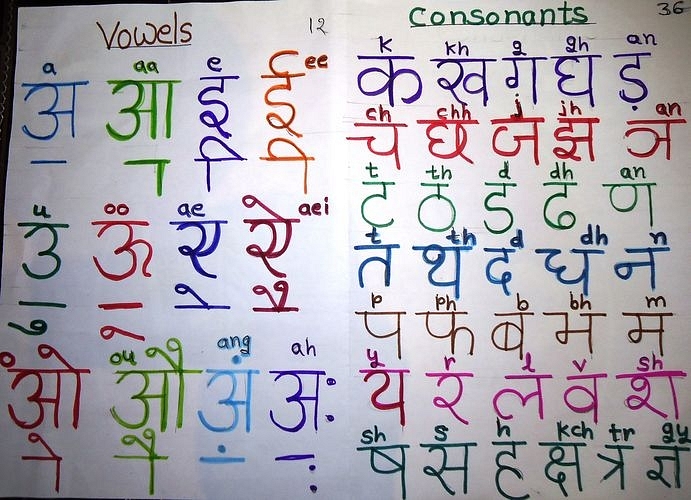Commentary
Eastern struggles in a Hindi universe

When Prime Minister Narendra Modi took charge, one of the visible changes was in realm of language. Although he is a native Gujarati speaker, he chose to use Hindi as his primary medium of communication, instead of the traditional use of English. The move triggered a series of debates on the importance of regional languages, revival of Sanskrit and so on. I am sure these issues will continue to be discussed for a long time.
However, the language debate, which also ignited a concurrent Hindi centric discourse over its role as a national language, is making me a little uncomfortable due to shades of language chauvinism.
Nowadays, most Indians attempt to understand basic Hindi, even if they are unable to speak it fluently. The native Hindi speakers sometimes fail to appreciate the effort and respond by laughing at their diction and grammar. This is hurtful and counterproductive. Perhaps a lot of this behaviour stems from ignorance, so I will try and explain why learning Hindi is not a trivial exercise. Much has been said about difficulties faced by those from South India, so let me give you a perspective from the East.
I am an Axomia, or Assamese to the non-initiated (the “Xa” is pronounced as a hard “Ha”). I belong to a small, non-Hindi speaking state, where my people seriously struggle to speak not just Hindi but many other Indian languages. It has got nothing to do with unwillingness. We simply have inherent difficulty in forming certain words or saying phrases correctly.
The Assamese language does not contain harsh consonants. Sounds like Ta, Tha, Dha, Nya, Jha simply don’t exist. For instance, Ch is transformed into Sa, and the original Sa is pronounced as Xa. Thus, when people arrive fresh-off-the-boat to the Northern heartland, they ask for Saul, Sini and Sai (i.e. Chawal, Chini, Chai), which may be amusing to the Hindi native, but sound perfectly acceptable to the Assamese.
In fact when one has spent an entire childhood listening to stories of Rabon, Lokhon, Bebexon and Noroxingho, it is quite shocking to hear of them being referred to as Ravan, Lakshman, Vibheeshan and Narasimha.
Even after the ear begins to tune in to the North-Indian pronunciations, how does one re-train the tongue to twist and form those hard sounds? Believe me, Hindi sounds can be tough!
Next, there is the never-ending problem of gender that plagues all East Indians. Hindi requires all nouns to have either a male or a female gender. What makes chairs female and tables male? Why are heavy, clunky vehicles female? Most absurd of all, why is a moustache or a beard female?
The gender rule is particularly galling for the Assamese, since we are a people who like to make our own rules. In a country populated with female rivers, we insist on having the male Brahmaputra. While most Indians drink their beverages, we Easterners “eat them”!
Then there is the issue of thinking in the native language, and translating the phrases into Hindi. The results can be rather unfortunate. For instance, my aunt once went to a store and haggled with the shopkeeper. The man quoted a ridiculous price.
She thought he was joking, so she said “bhai, aap kyon hamara ijjat lootta hai?” (Brother, why are you molesting me?) . Not surprisingly, the shopkeeper turned red, denied the allegation vehemently, and then refused to serve her. It was a classic case of meaning lost in translation.
To compound the problem, there are quaint metaphors, which come naturally to a native speaker, but can be quite challenging for others. For example, my pregnant cousin learnt to say the phrase “mein pet se hoon” (I am pregnant).
One day, she was stopped by a cop for not wearing a seat belt. So she tried to explain the reason and said “Bhai sahab, mera pet hai” (Brother, I have a paunch). The cop looked at her blankly and said “Toh?” (So?) Confused, she pointed to her stomach and tried again “Bhaisahab, dekho,dekho, mera pet hai”.
The cop nodded understandingly and said “Madamji, pet toh thoda bahut sabka ka hota hai. Par paisey toh aapko dene padenge”. (Ma’am, everyone tends to have a paunch. But you will have to pay the fine).
Many learners start by speaking a pidgin version of a new language. For example: “Aap ke paas ekthu mithai hoga niki?” I’m sure you understood that statement perfectly! It goes to show that with some amount of open-mindedness, co-operation and humour, communication can be an easy process. All it needs is a little bit of heart.
I would like to end with a small tip. Some of my people tend to get over-enthusiastic about their newly acquired linguistic skills and “Hindize” native words. The results can be rather interesting.
So dear reader, if you ever come across an Assamese female who says, “bhai mera chati pakad lo”, (Brother, please hold my chest) DO NOT panic, or comply with the literal request! Just be chivalrous and hold her umbrella, please.
Support Swarajya's 50 Ground Reports Project & Sponsor A Story
Every general election Swarajya does a 50 ground reports project.
Aimed only at serious readers and those who appreciate the nuances of political undercurrents, the project provides a sense of India's electoral landscape. As you know, these reports are produced after considerable investment of travel, time and effort on the ground.
This time too we've kicked off the project in style and have covered over 30 constituencies already. If you're someone who appreciates such work and have enjoyed our coverage please consider sponsoring a ground report for just Rs 2999 to Rs 19,999 - it goes a long way in helping us produce more quality reportage.
You can also back this project by becoming a subscriber for as little as Rs 999 - so do click on this links and choose a plan that suits you and back us.
Click below to contribute.
Latest